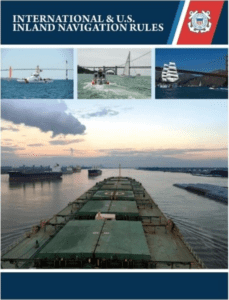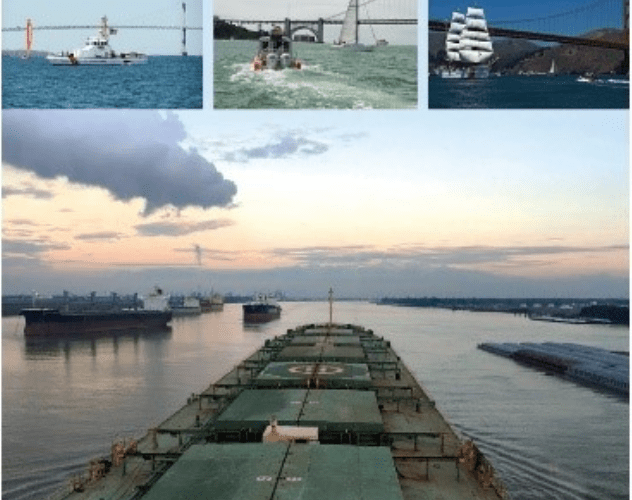by Will Sofrin
 When I first started learning how to sail as a teenager, I was given some pretty simple advice that should not be considered absolute. I was told not to worry about any power boats so long as I was under sail. Then if there was another sailboat on the water, the one on starboard tack has rights over the boat on port tack. Then of two boats on starboard tack, the leeward one has the right of way. Yes, the advice was correct, to a point, but I can think of at least a dozen situations on the water when that would not have stood ground had a collision occurred. I can go on and on about the minutia of the right of way, but in my opinion, if a collision seems imminent, despite having the right of way, I will do anything I can to avoid a collision.
When I first started learning how to sail as a teenager, I was given some pretty simple advice that should not be considered absolute. I was told not to worry about any power boats so long as I was under sail. Then if there was another sailboat on the water, the one on starboard tack has rights over the boat on port tack. Then of two boats on starboard tack, the leeward one has the right of way. Yes, the advice was correct, to a point, but I can think of at least a dozen situations on the water when that would not have stood ground had a collision occurred. I can go on and on about the minutia of the right of way, but in my opinion, if a collision seems imminent, despite having the right of way, I will do anything I can to avoid a collision.
I recently reached out to my friend Kent Dresser to ask his take on a situation I found myself in with a container ship. Kent is the founder of Confident Captain, a Rhode Island based training facility that offers courses and certifications for aspiring captains. Kent is an encyclopedia of knowledge regarding safe vessel operation and happily takes my calls to help answer any questions I have regarding anything relating to the “Rules of the Road,” the international guidelines adopted for the prevention of collisions at sea.
I was sailing through a shipping channel and on a collision course with an underway container ship. Despite being under sail, I knew my responsibility was to give way to the container ship. As a rule of thumb, I always, without question, give way to any vessels that are substantially larger or ones I believe to be working, such as a fishing boat with a trolling line. When working as a deckhand in my twenties, I had several superiors who directed me to always give way to the bigger commercial vessels because of the rule of tonnage.
When asked about tonnage, Kent said. “The ‘rule of tonnage’ is not an actual rule of the road — but it is a good rule for safe navigation.” Kent went on to say. “An easy translation into a safe standing order is to stay clear of commercial vessels.”
Kent then offered a simplified rundown of how the Rules of the Road are structured. “There are 38 Rules of the Road broken down into six parts and five annexes. Part A of the rules includes general definitions and defines the types of vessels – Part B of the rules includes the steering and sailing rules which clarify who gives way to who and what actions may be required by the give way and stand on vessels. These rules define a sailing vessel as a vessel operating under sail alone (if her engine is running, she is considered power-driven). They also define a vessel restricted in her ability to maneuver –RAM– as a vessel that, from the nature of her work, is restricted in her ability to maneuver as required by these Rules and is, therefore, unable to keep out of the way of another vessel.
“These definitions then fall into a pecking order under rule 18 that lists who should give way to who. At the top of the pecking order is a vessel Not Under Command –NUC– which is defined as a vessel that has an exceptional circumstance (maybe broken down or limping home). The NUC is closely followed by RAM, CBD – vessel constrained by draught–, Fishing, Sailing and finally power-driven.”
Despite having decades of experience, my conversation with Kent left me feeling that I would do myself a favor by spending some time reviewing the Rules of the Road. So, I went looking and found a very useful website, developed by the United States Coast Guard, with the Amalgamated International & U.S. Inland Navigation Rules.
But what if I’m operating my vessel under sail, and I find myself in a collision situation with another vessel also operating under sail? Even if I am on a starboard tack or leeward boat, I mentally prepare a plan for staying on course but make sure I am ready to tack my boat because two wrongs don’t make a right. Even if I am in the middle of a race, hitting another boat when I had the opportunity to avoid the collision means I could be just as much at fault as the operator of the other vessel. Better to lose a fuse at a race protest meeting than end the day with a call to your insurance broker.
Visit the Confident Captain website to learn more about their resources and courses. Another great resource is BoaterU by Maritime Institute for courses on being a better recreational mariner.
Will Sofrin lives in Los Angeles with his wife and six-year-old daughter. He is a graduate of IYRS School of Technology & Trades, where he apprenticed in the wooden boat restoration program. After completing the program, he spent a decade working as a professional sailor, earning his 100-ton master’s license, and using his specialized wood-working skillset to secure positions on yachts and ships sailing through Europe, New England, the Caribbean, Central America, and the California coast. In 2014 he launched a design firm specializing in managing the restoration of historic homes and developing ground-up architectural packages for luxury residential homes. He still sails actively on his Pearson 33-2, participating in races in Santa Monica Bay as well as a number of double-handed near coastal races.

